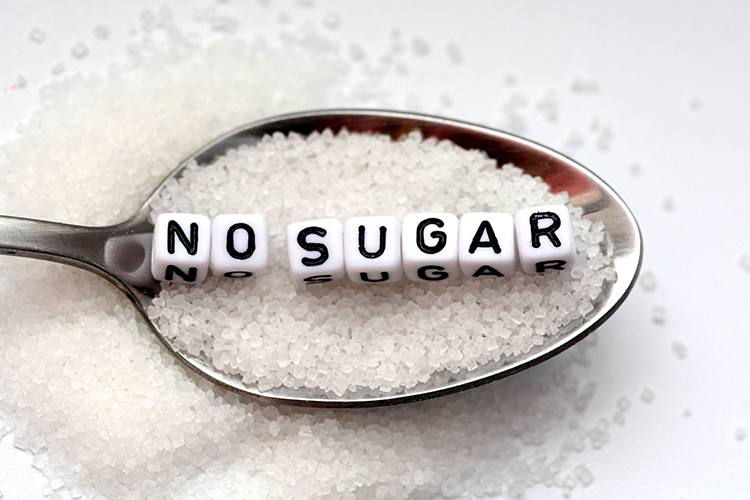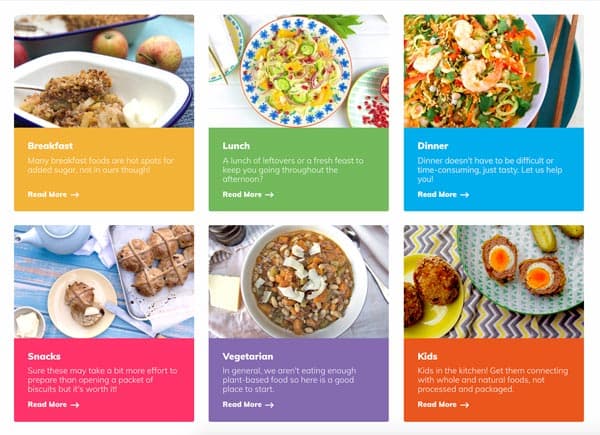Blog
‘No added sugar’ claims not as sugar-free as they seem
You see food or drink and the packaging states ‘no added sugar’ or ‘low sugar’. Great! This means it’s healthy, right?
Perhaps not, according to research out of Canada.
Looking at 3,048 products, including dairy and non-dairy beverages, yoghurts, cereals, fruit drinks, salad dressings, and condiments such as fruit preserves and syrups, researchers identified 635 as having at least one claim about added sugar.1
Generally, products with a claim about sugars where considered better than those similar products without a claim. However, nearly half of those that could be considered ‘healthier’ still contained an excessive amount of added sugar, having a total sugar amount of 10g/100g or more.
15 of the 16 fruit preserves and all 234 fruit juices and juice drinks with no sugar added claims had too much of the sweet stuff.
So, can they really be considered healthy?
Unfortunately, fruit drinks or fruit juice can still carry a claim for ‘no added sugar’, despite fruit juice being a ‘free’ sugar according to the World Health Organization (WHO) and the product containing excess amounts of free sugars.2
Free sugars defined by WHO are “monosaccharides and disaccharides added to foods by the manufacturer, cook or consumer, and sugars naturally present in honey, syrups, fruit juices and fruit juice concentrates.”2
Therefore, the term ‘free’ or ‘added’ sugar can be interchangeable.
A ‘free’ sugar is a sugar no longer occurring in its natural state, such as the juice from an apple. This is compared to an apple in its whole-fruit form packaged with fibre, water and other beneficial nutrients. As nature intended.
The fibre in fruit limits how much one eats. Without it, we can slam back a lot of juice, which is received by our body as a pile of sugar.
Ideally, claims to contain no added sugar need to be strict, encompassing all ‘free’ or ‘added’ sugar sources – not only the stuff from sugar cane.
In Australia, claims for ‘low sugar’ mean the total sugar amount needs to be less than 5g/100g. Claims for ‘’no added sugar’ means:
“(a) the food contains no added sugars as standardised in clause 1 of Standard 2.8.1*, honey, malt, or malt extracts; and
(b) the food contains no added concentrated fruit juice or deionised fruit juice, unless the food is standardised in Standards 2.6.1 or 2.6.2.”3
What do we take from this?
Remember to read your labels, including the ingredient list carefully, and know that fruit juice is considered a source of free/added sugar.
By Angela Johnson (BSHc Nut. Med)
*Standard 2.8.1, “sugars means –
- hexose monosaccharides and disaccharides, including dextrose, fructose, sucrose and lactose; or
- starch hydrolysate; or
- glucose syrups, maltodextrin and similar products; or
- products derived at a sugar refinery, including brown sugar and molasses; or
- icing sugar; or
- invert sugar; or
- fruit sugar syrup;
derived from any source, but does not include –
- malt or malt extracts; or
- sorbitol, mannitol, glycerol, xylitol, polydextrose, isomalt, maltitol, maltitol syrup or lactitol.”4
References:
- Bernstein, JT Franco-Arellano, B Schermel, A Labonté, M & L’Abbé, MR 2017, ‘Healthfulness and nutritional composition of Canadian prepackaged foods with and without sugar claims’, Applied Physiology, Nutrition, and Metabolism, viewed 24 October 2017, <http://www.nrcresearchpress.com/doi/pdf/10.1139/apnm-2017-0169>
- World Health Organization 2015, Information note about intake of sugars recommended in the WHO guideline for adults and children, viewed 4 July 2017, <http://who.int/nutrition/publications/guidelines/sugar_intake_information_note_en.pdf>
- Australian Government 2016, Australia New Zealand Food Standards Code – Standard 1.2.7 – Nutrition, Health and Related Claims, viewed 24 October 2017, <https://www.legislation.gov.au/Details/F2016C00082>
- Australian Government 2016, Australia New Zealand Food Standards Code – Standard 2.8.1 – Sugars, viewed 24 October 2017, <https://www.legislation.gov.au/Details/F2011C00546>












